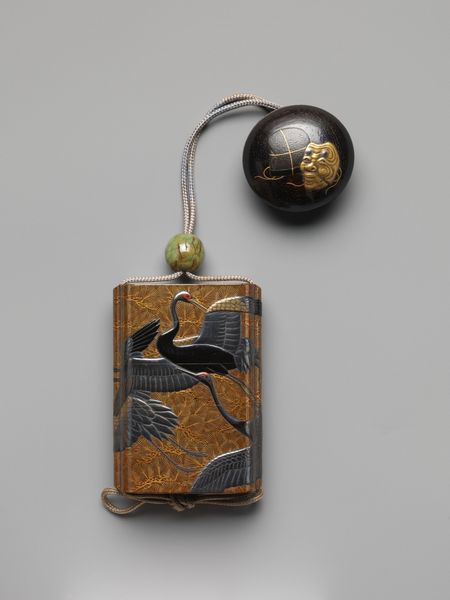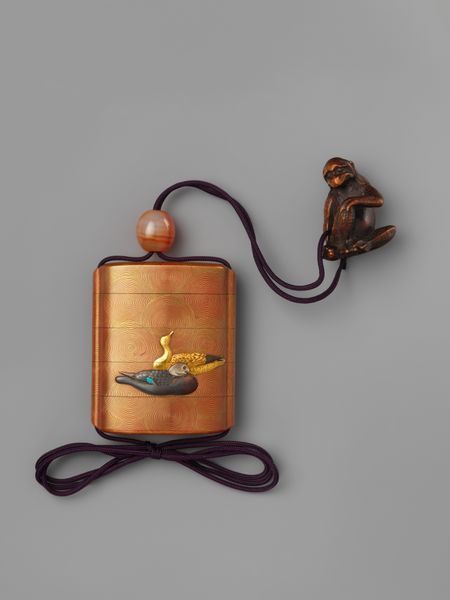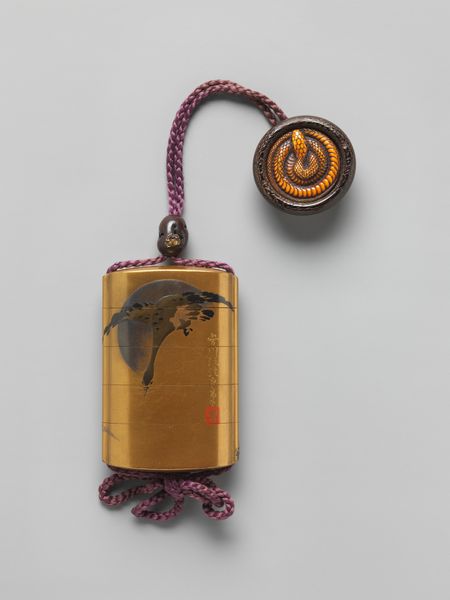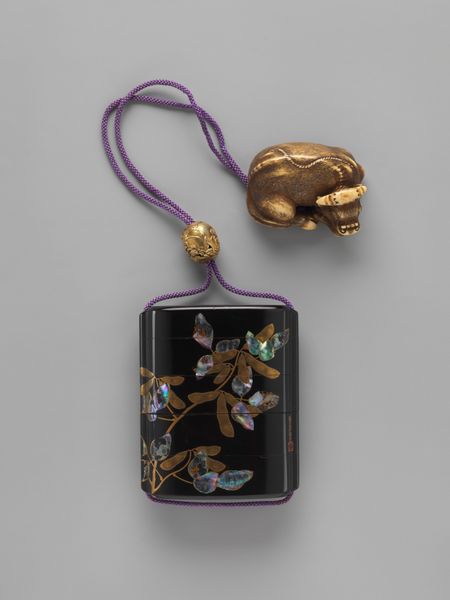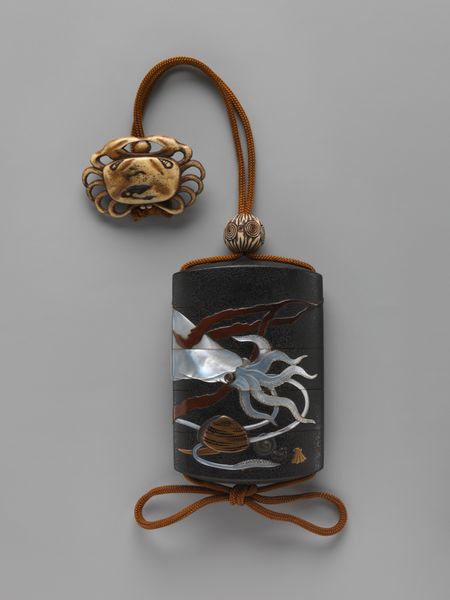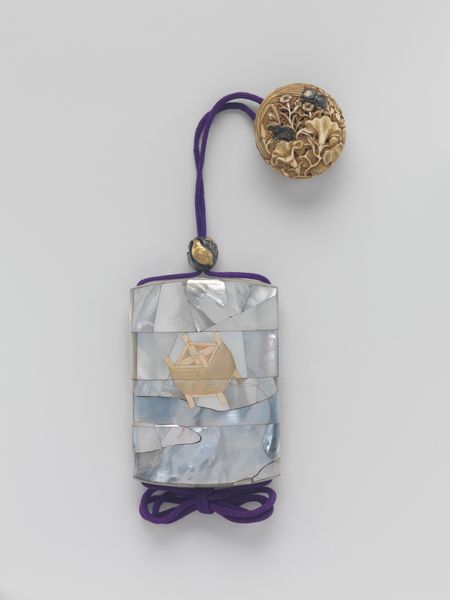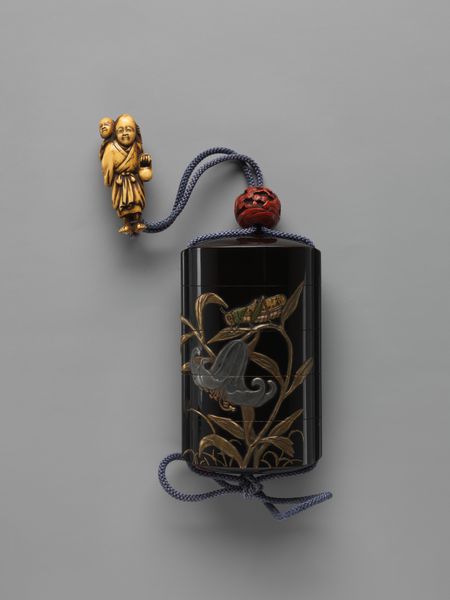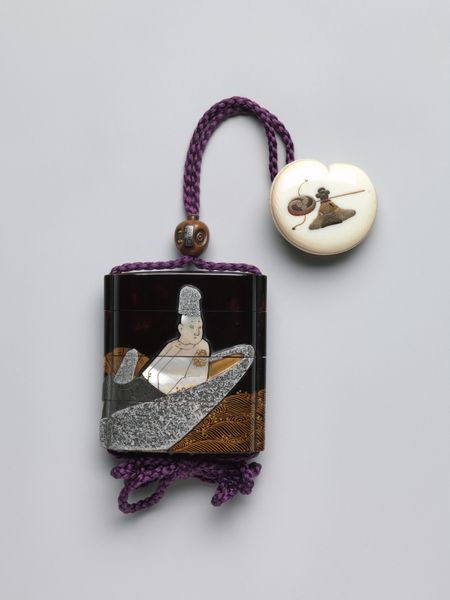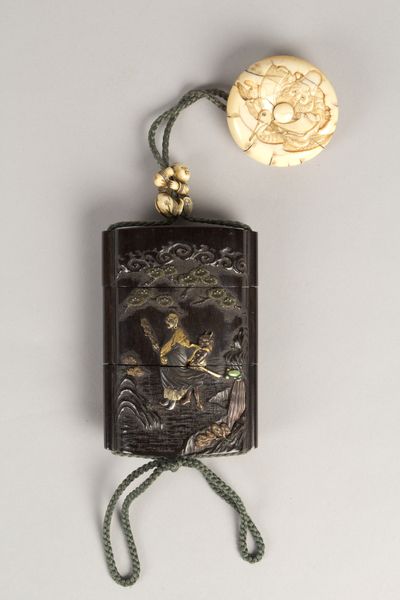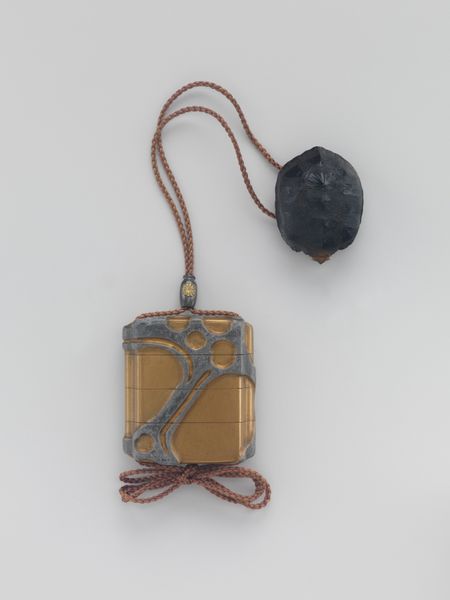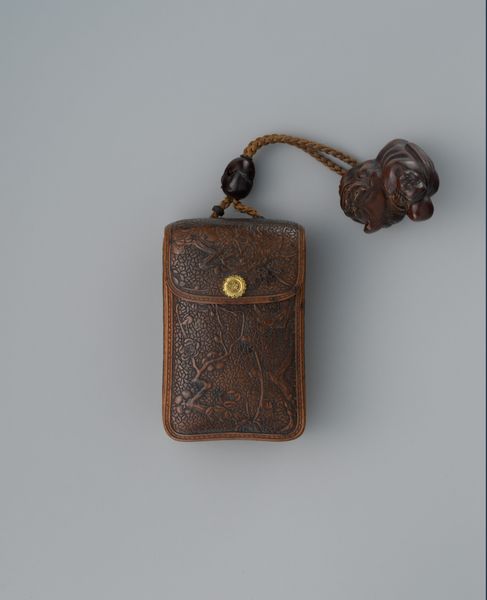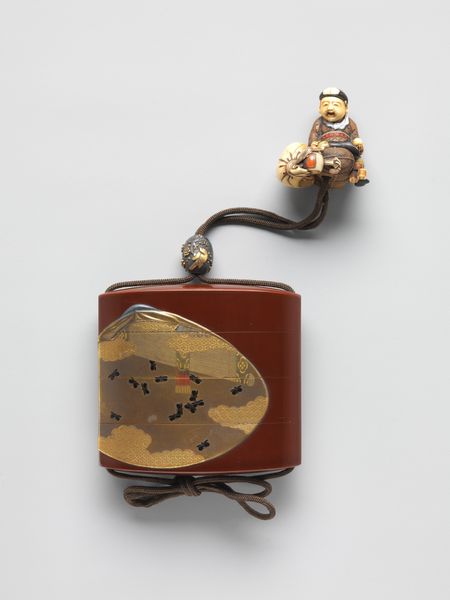
Miniature Inrō with Design of Firewood-laden Boats on Waves 19th century
0:00
0:00
intaglio, wood
#
intaglio
#
asian-art
#
orientalism
#
24_meiji-period-1868-1912
#
wood
#
decorative-art
#
miniature
Dimensions: H.1 7/8 in. (4.8 cm); W. 1 1/2 in. (3.8 cm)
Copyright: Public Domain
Editor: Here we have a 19th-century Inrō, a Japanese decorative case, crafted by Shibata Zeshin. The title is Miniature Inrō with Design of Firewood-laden Boats on Waves. Made of wood with intaglio, it strikes me as both incredibly detailed and quite intimate. What can you tell us about it? Curator: It's a fascinating example of the interplay between artistic expression and social context. The Meiji period, during which this piece was created, was a time of immense change for Japan as it rapidly modernized and opened itself to Western influence. Decorative art, like this inrō, occupied a precarious position during this transition. Editor: How so? Curator: Well, on one hand, there was a desire to preserve traditional craftsmanship. On the other hand, the aristocracy was experiencing changing tastes, which shifted their demand and also prompted the rise of museums and art dealing, which would display Japanese artworks in a completely new way. How might displaying Japanese culture in Western museums affect artistic expression? Editor: I hadn't thought about it like that! Suddenly the symbolism – boats carrying firewood – seems more deliberate, almost like a constructed narrative of Japanese life that would resonate with Western audiences looking for exoticism. Curator: Exactly! Artists had to negotiate how to represent their culture, not only for domestic patrons but also for a growing international market, shaping both the art's production and how it would be received. Editor: So it’s not just about personal expression but a dialogue between cultures mediated by the art market? Curator: Precisely! Understanding that broader context deepens our appreciation for Zeshin's craftsmanship, allowing us to analyze it through a historical and socio-political lens. What do you think you’ll be taking away from this audio guide segment? Editor: How important it is to view artwork like this not as existing in a vacuum, but to look closely at when, where, and for whom it was made, which can alter my entire perspective of what I am viewing. Curator: Yes, the politics of imagery is often tied directly to an art piece's creation, production, and dissemination. I'm glad you found this enriching.
Comments
No comments
Be the first to comment and join the conversation on the ultimate creative platform.
